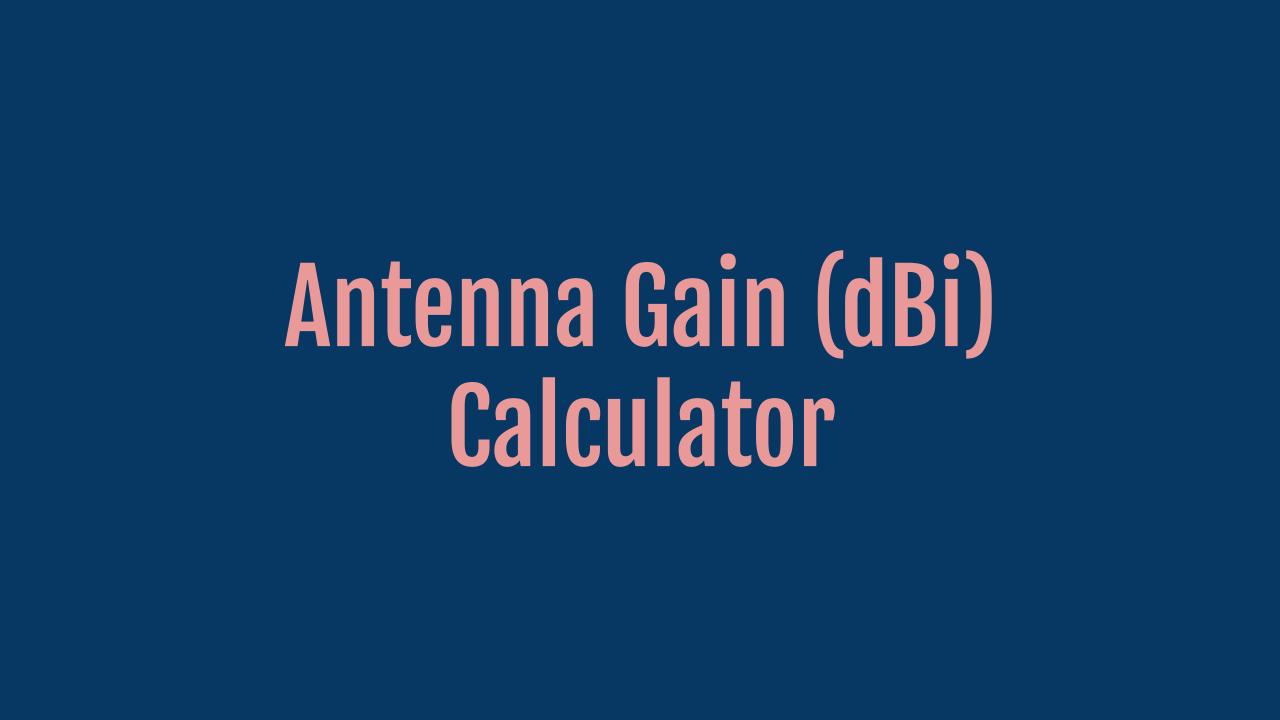This tool computes the Antenna Gain using:
- Antenna Factor (units: dB/m)
- Frequency of operation (units: Hz/kHz/MHz/GHz)
🔁 Antenna Gain to Factor
Antenna Gain Formula
Gain (dBi) = 20*Log10(9.73/(λ*(10)AF/20))
Where
- λ = Wavelength = c/f, where c is the speed of light and f is the frequency
- AF = Antenna Factor
Example Calculation
At 915 MHz,
- AF = 10 dB/m, the Antenna Gain is 19.45 dBi
- AF = 30 dB/m, Antenna Gain is -0.55 dBi
At a higher frequency of 2450 MHz for an AF of 10 dB/m, the Gain is 28 dBi.
The gain increases with frequency as according to the equation, it is inversely proportional to the wavelength. The wavelength at 2450 MHz is smaller than at 915 MHz.
Definitions
Antenna Factor
It is the ratio of the electric field E (units: V/m or μV/m) to the voltage V (units: V or μV) induced across the terminals of an antenna.
The units are dB-per-meter or dB/m.
💡 A higher value of Antenna factor means an electric field induces a smaller voltage across the antenna. This implies or results in a lower value of antenna gain.
In simple terms, The Antenna Factor (AF) is a way of measuring how an antenna converts the electromagnetic waves in the air into a voltage that can be measured by a device like a receiver, spectrum analyzer, or radio. It tells you how much the signal strength (in volts per meter) changes when it reaches the antenna.
In simple terms:
Antenna Factor acts like a “conversion rate” between the electric field strength around the antenna and the voltage output from the antenna.
Let’s say you’re testing the signal strength in a room and your antenna produces an output voltage of 0.1 V. If the antenna factor is 20 dB/m, it tells you how strong the electromagnetic field around the antenna is. Using the antenna factor, you can convert the voltage to the corresponding field strength and analyze whether the signal levels are within acceptable limits.
Wavelength
When we talk about wavelength in relation to antennas, we are referring to the length of the waves that the antenna is designed to transmit or receive.
Antennas work with electromagnetic waves, such as Wi-Fi signals, and the wavelength is the distance between two peaks of these waves. The wavelength is important because it helps determine the size of the antenna and how well it can transmit and receive signals.
Related Calculators
- dBuV/m to dBm
- dBuV to uV
- dBm to V/m
References
[1] Antenna Factor on Wikipedia
